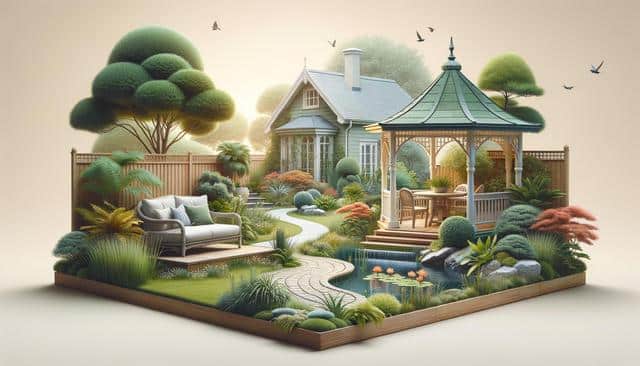Creative Garden Makeover Ideas to Refresh Your Outdoor Space
Transform your outdoor space with garden makeover ideas. Whether it’s adding colorful plants, creating pathways, or installing outdoor lighting, simple changes can enhance the aesthetic and functionality of your garden, making it a peaceful retreat.

Define Your Garden Zones
Before diving into a garden makeover, it’s helpful to visualize your outdoor space as a series of zones. Each section can serve a different purpose, which adds both structure and variety to your garden’s layout. For instance, you might want a cozy seating area, a space for growing herbs and vegetables, and a decorative floral section. Clearly defined zones make the garden more inviting and easier to enjoy.
Consider using natural dividers such as:
- Hedges or trellises with climbing plants
- Pathways made of gravel, brick, or stepping stones
- Low fences or raised beds to separate areas
By defining zones, you can cater to different needs—like relaxation, entertaining, or gardening—within one cohesive space.
Incorporate Functional and Stylish Pathways
Pathways are not just practical; they can also enhance the visual appeal of your garden. They guide the eye and the feet, connecting different parts of the garden while adding texture and interest. Materials like natural stone, reclaimed bricks, or wooden decking can complement the surrounding greenery beautifully.
When planning garden paths, think about:
- The width needed for comfortable walking
- Low-maintenance materials that blend with your garden style
- Lighting options for evening visibility
Curved paths, in particular, add a sense of journey and discovery to your outdoor space. They can also make a small garden feel more spacious by drawing attention to different focal points.
Add Layers of Greenery and Color
One of the most transformative garden makeover ideas is to play with plant layers. Using a mix of ground cover, mid-height shrubs, and taller trees or climbers creates depth and texture. This layered approach not only looks lush but also supports biodiversity by offering shelter and food for various pollinators and wildlife.
When choosing plants, think about:
- Seasonal blooms for year-round color
- Native species that thrive in your climate
- Incorporating edible plants like herbs or berries
Color theory can also play a role. Cool tones like blues and purples evoke calm, while bright reds and yellows energize the space. Mixing foliage with different shapes and shades keeps the garden visually engaging even when flowers aren’t in bloom.
Light Up the Ambiance
Outdoor lighting is a subtle yet powerful way to elevate your garden after sunset. Whether you’re hosting an evening gathering or enjoying a quiet moment alone, well-placed lighting can create a warm and welcoming atmosphere. It’s also practical for safety and navigation.
Popular lighting options include:
- String lights draped over seating areas or pergolas
- Solar-powered lanterns along pathways
- Spotlights to highlight trees and features
- LED strips under benches or garden steps
Opt for energy-efficient or solar-powered options to reduce environmental impact. Adjustable lighting can also help you set different moods depending on the occasion.
Accessorize with Garden Features
Adding a few distinctive features can give your garden a personal touch and turn it into a true extension of your home. These features don’t have to be large or expensive—simple additions can make a big difference in the overall aesthetic and usability of your garden.
Some ideas include:
- Water elements like a small fountain or birdbath
- Garden sculptures or decorative pots
- Outdoor furniture made from weather-resistant materials
- Vertical planters or wall-mounted displays
Choose accessories that reflect your personal taste and complement the existing style of your outdoor area. These elements can act as focal points and tie the entire garden together.
Conclusion: Bringing Your Garden Makeover to Life
A garden makeover doesn’t have to be overwhelming or costly. With thoughtful planning and creative touches, you can transform your outdoor space into a functional and beautiful retreat. Whether you’re working with a small courtyard or a sprawling backyard, defining zones, adding greenery, and incorporating lighting and features can bring new life to your garden. By focusing on both form and function, you’ll create an environment that invites relaxation, connection, and enjoyment throughout the year.